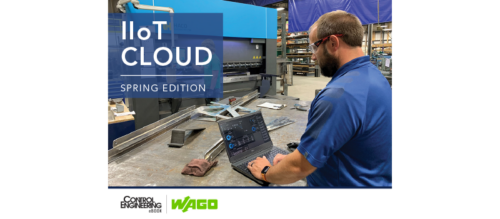The future of IoT: Collaborative solutions
The future of Internet of Things (IoT) connectivity requires flexible solutions that address a wide variety of IoT applications, use cases and device types.
As the demand for connectivity continues to grow, so does the reliance on the Internet of Things (IoT). In the manufacturing industry, IoT devices can enable smarter factories, but with so many different options available, an emerging challenge is the lack of interoperability between connectivity platforms. While the goal of leveraging IoT solutions is to make life easier for the end user, and in this case factory workers, having multiple solution offerings inherently makes things more difficult.
Factory plants are full of “connected things” including machines, conveyor belts and robotics, but if IoT devices and solutions do not work together, busy factor floors can quickly become hard to navigate and nearly impossible to troubleshoot. For example, if the line goes down, it becomes challenging to pinpoint where the error began.
We must ask the question: “How can technology evolve to work together?” The future of IoT connectivity requires flexible solutions that address a wide variety of IoT applications, use cases and device types.
The massive IoT connectivity landscape is fragmented, with no single solution offering ubiquitous coverage and the capability to address all use cases. IoT applications benefit from the broad range of available connectivity technologies chosen based on various factors, including network technology characteristics, commercial environment, business model and implementation environment. Today, leading technologies such as LoRa/LoRaWAN, NB-IoT, Zigbee, Wi-Fi, Bluetooth (BLE) and 5G dominate the industry.
The connectivity landscape
A McKinsey report predicts approximately $700 to $900 billion will go into initial installations of 5G, covering about 25% of the world’s population over the next decade. For manufacturing, 5G will open up completely new possibilities for the industry to retrieve information and trigger actions independent of the real location of machines. This improves flexibility in production, machine availability and overall equipment effectiveness (OEE).
But 5G isn’t the only option and there is a range of alternative technologies that offer flexible, cost-effective power and low bandwidth options for IoT deployments in manufacturing facilities (see Figure 1). These technologies can be used in tandem with 5G or singularly as the use case calls for it.
One of those technologies is LoRa, a device-to-cloud platform built for applications requiring long range, low power (see Figure 2). LoRa devices provide the communication layer for the LoRaWAN open protocol, a low power, wide area networking (LPWAN) protocol. Due to the long range, low power and long battery life of LoRa-based devices, sensors in manufacturing plants can relay critical data to a LoRaWAN network where it can be analyzed, and businesses operations can be optimized. Gateways leveraging the LoRaWAN protocol also enable geolocation capabilities to track and monitor assets and their locations to improve logistics, prevent theft and enhance factory operational efficiency.
Leveraging established networks
By 2026, ABI Research estimates that LoRa will be the leading non-cellular LPWA network technology, accounting for more than half of all non-cellular LPWA connections. Additionally, the firm estimates that total non-cellular LPWA connections will reach 1.3 billion, and cellular LPWA connections, including NB-IoT, LTE-M and 5G, will reach 1.5 billion connections, including the large 2G customer base migrating toward NB-IoT and LTE-M.
Devices leveraging LoRa are simple to deploy because they easily plug into existing infrastructure. Additionally, the LoRaWAN protocol has a communication range that can reach up to six miles or more, so no matter how big the facility is the device will be in range. Manufacturing facilities are typically large, have complex designs as well as leverage dense building materials. All these factors make it challenging for communication signals to get through, including 5G, but LoRa’s low power qualities and ability to penetrate such materials make it ideal.
Another driving factor for LoRa-enabled deployments is the cost-effectiveness of its network architecture without needing a licensed spectrum, which is well suited for manufacturing cases.
Working together
Manufacturing plants will benefit from simple solutions that work together to provide a seamless connection between the many devices in indoor and outdoor environments.
As more IoT devices enter manufacturing plants, 5G networks will complement existing solutions like LoRa, Wi-Fi and BLE as a way to access network technology and to backhaul data from gateways in remote areas to the cloud or head-end systems.
With hybrid networks, manufacturing plants can better deploy IoT-connected sensors and introduce always-on monitoring functions into production.
Original content can be found at Plant Engineering.
Do you have experience and expertise with the topics mentioned in this content? You should consider contributing to our CFE Media editorial team and getting the recognition you and your company deserve. Click here to start this process.






